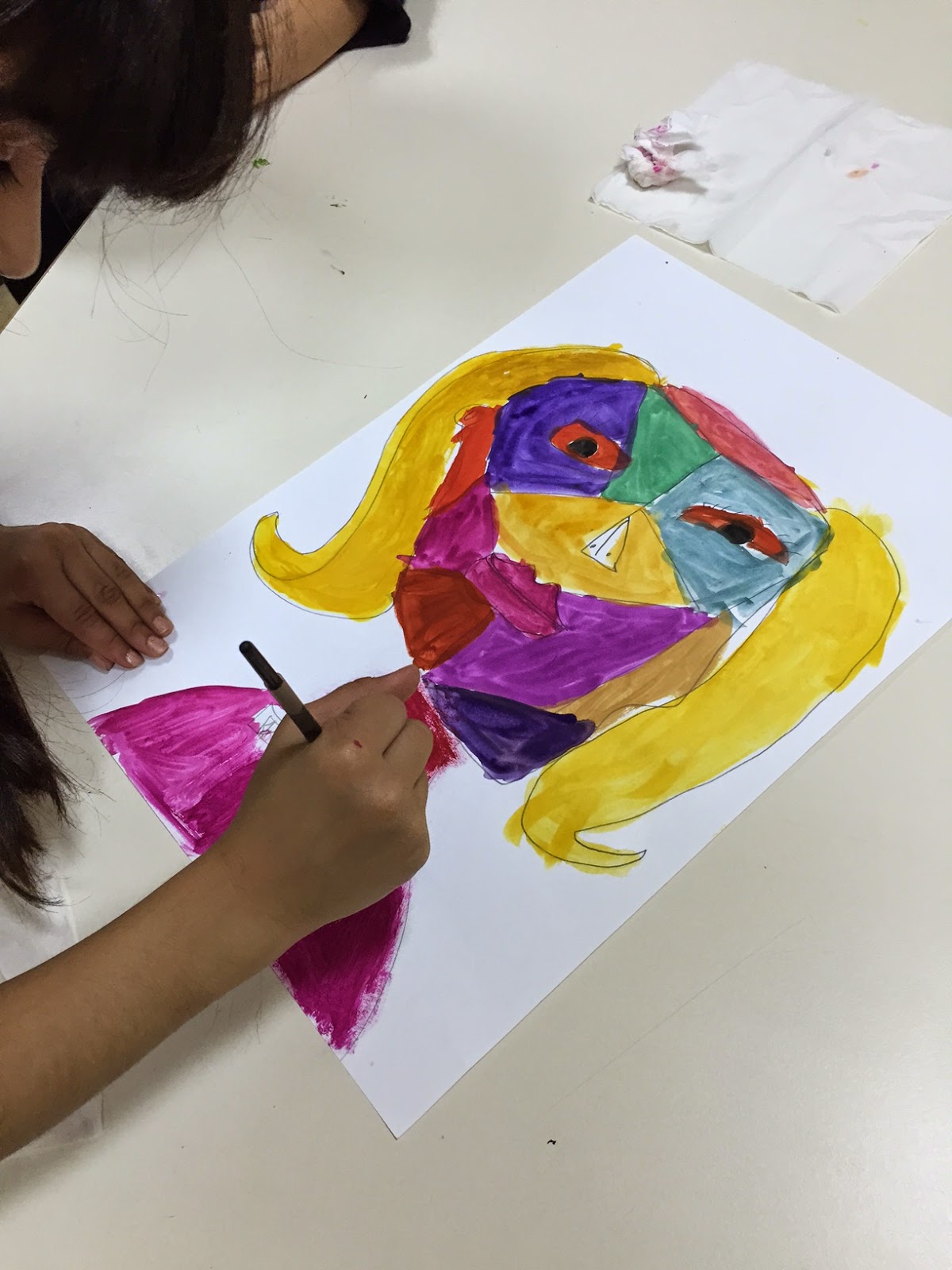This is one of my favourite projects to start off the academic year with. It's minimum prep and very little clean up which leaves you with maximum time to focus on getting to know your students' abilities. The beautiful results are a bonus too!
This lesson is based on line, shape and pattern. I did it with Grade 3 but it can be applied to any grade level.
Materials required:
- square paper
- markers & colour pencils
- pencils, erasers
- thin black markers for outlining
Duration: 3 classes of 80 minutes each
1. Discuss and brainstorm with students about different types of lines (wavy, zig-zag, swirly, straight, etc.). Do the same with basic geometric and organic shapes. Ask them to point out the different lines and shapes they see within the classroom.
2. I gave each student a blanl, square sheet of paper and through verbal instruction only, I asked them to draw five types of lines: a wavy line, a zig zag line, a straight line, a curved line and a loopy line. I told the students that each line must go from one end of the paper to the other. The lines could be drawn in any direction and must overlap/intersect each other.
3. Now students had to draw patterns into each section and outline with a fine black marker. This was the end of the first lesson.
4. Here is the part that the students love - colouring! This was done in the second and third lesson using both colour pencils and markers. I stretched my high abilities by getting them to add tones of light and dark within their patterns.
This lesson is based on line, shape and pattern. I did it with Grade 3 but it can be applied to any grade level.
Materials required:
- square paper
- markers & colour pencils
- pencils, erasers
- thin black markers for outlining
Duration: 3 classes of 80 minutes each
1. Discuss and brainstorm with students about different types of lines (wavy, zig-zag, swirly, straight, etc.). Do the same with basic geometric and organic shapes. Ask them to point out the different lines and shapes they see within the classroom.
2. I gave each student a blanl, square sheet of paper and through verbal instruction only, I asked them to draw five types of lines: a wavy line, a zig zag line, a straight line, a curved line and a loopy line. I told the students that each line must go from one end of the paper to the other. The lines could be drawn in any direction and must overlap/intersect each other.
3. Now students had to draw patterns into each section and outline with a fine black marker. This was the end of the first lesson.
 |
| Lines & patterns drawn in pencil and outlined with marker |
 |
| Just gorgeous! |















































